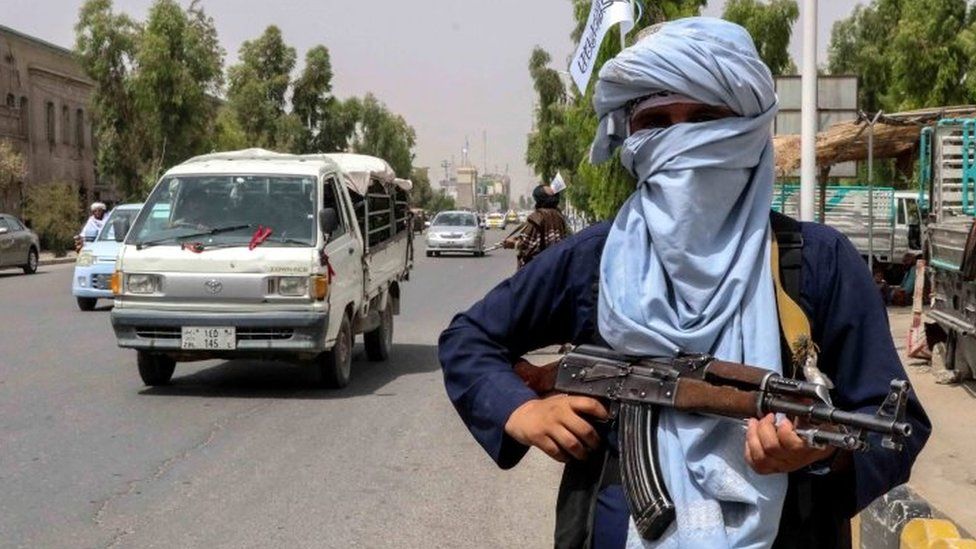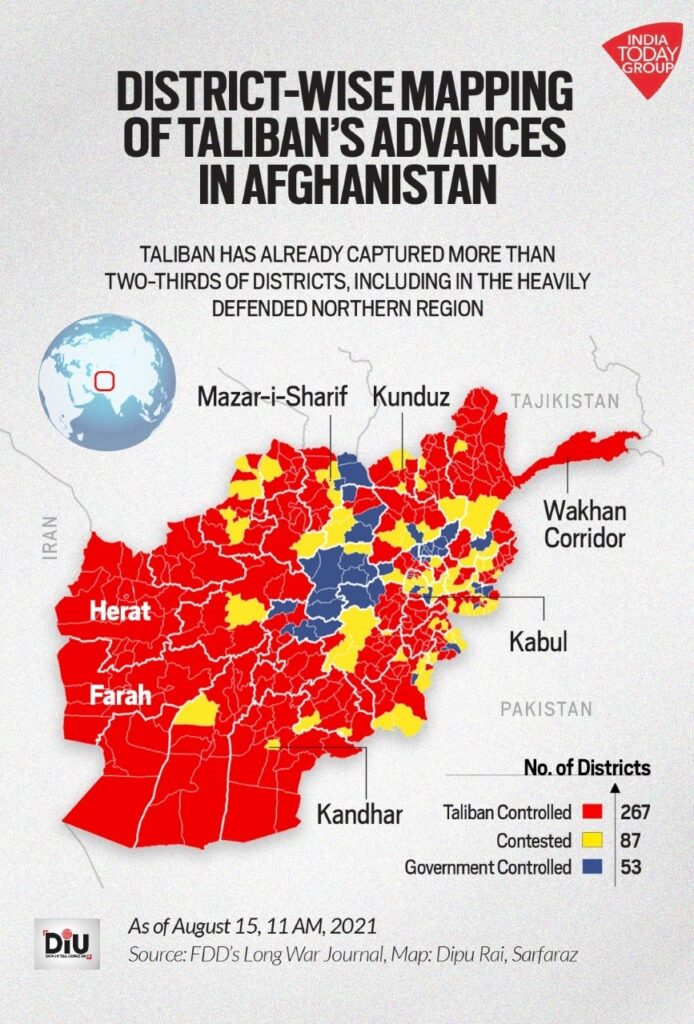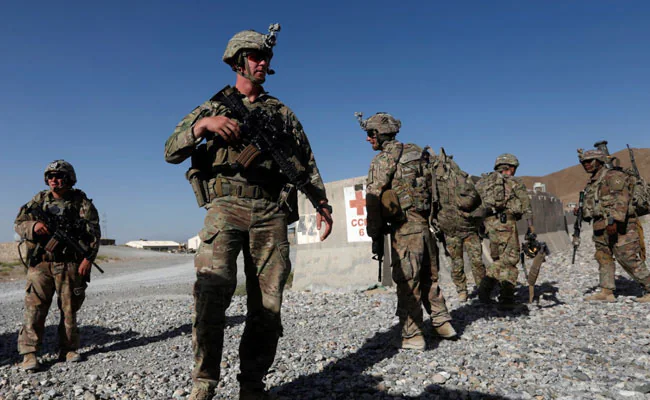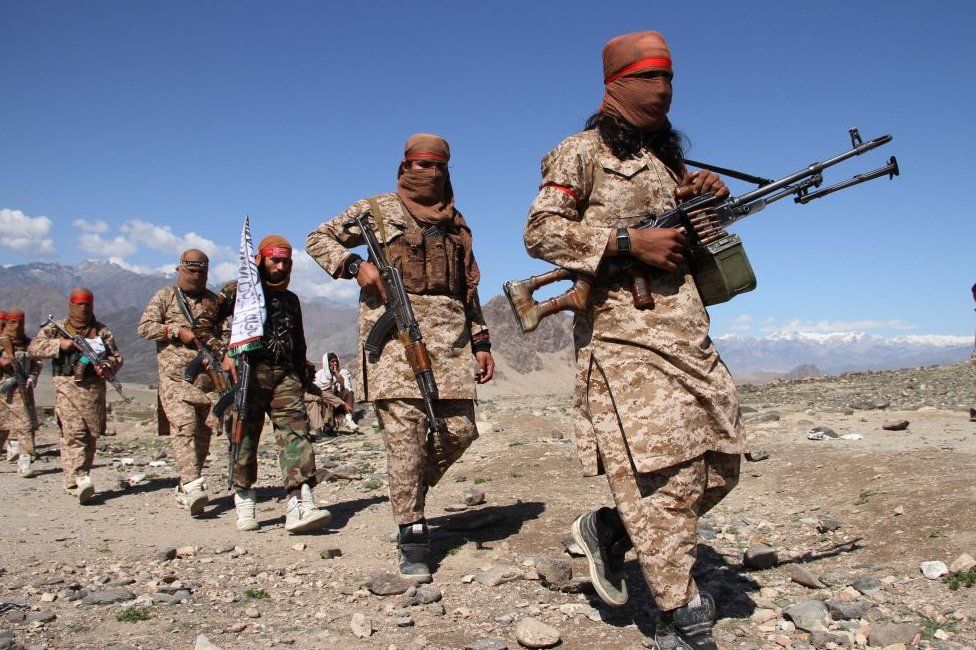|
Getting your Trinity Audio player ready...
|
Hey Readers! Two decades ago in 2001, the American soldiers came to Afghanistan and started the longest war. The Taliban were suppressed, but now as the US troops are withdrawn the Taliban have come back. Today I will be explaining who are the Taliban, why did US troops come to Afghanistan, what’s the current situation etc. Click the button at the end of the post to listen to the article!
Introduction
The capital Kabul was the final major city to succumb to the attack, which began months ago but escalated as hard-line Islamists seized territory. In 2018, the Taliban began direct talks with the US, and in February 2020, the two sides reached an agreement in which the US agreed to depart and the Taliban agreed to refrain from attacking US personnel. Other commitments included not allowing al-Qaeda or other terrorists to operate in regions controlled by the government, as well as moving forward with national peace negotiations. However, the Taliban continued to attack Afghan security personnel and civilians in the following year, rapidly moving across the nation.
Who are the Taliban?
The Taliban, whose name means “students” in Pashto, first appeared in 1994 in the Kandahar region of southern Afghanistan. Following the withdrawal of the Soviet Union and the consequent fall of the government, it was one of the forces fighting a civil war for control of the country. It was founded by so-called “mujahideen” fighters who, with the help of the United States, fought Soviet forces in the 1980s. In less than two years, the Taliban had seized complete control of the country, declaring an Islamic emirate in 1996 and imposing a strict interpretation of Islamic law. Other mujahideen organisations withdrew to the country’s north. Following the Al-Qaeda attacks on September 11, 2001, in the United States, US-backed soldiers in the north surged into Kabul in November under the cover of US airstrikes. The Taliban dispersed into the countryside, where they launched a two-decade insurgency against the Afghan government and its Western supporters. Mullah Mohammad Omar, the Taliban’s founder and first leader, went into hiding when the Taliban was deposed. His whereabouts were so mysterious that his death, in 2013, was only confirmed by his son two years later.
What is the Taliban’s ideology?
The Taliban imposed a severe interpretation of sharia law throughout their five years in power. Women were largely forbidden from working or studying, and unless accompanied by a male guardian, were restricted to their houses.
Why did the US fight a war in Afghanistan and why did it last so long?
In 2001, the United States was responding to the 9/11 attacks in New York and Washington, which killed almost 3,000 people. Al-Qaeda, an Islamist militant group, and its leader, Osama Bin Laden, were blamed by officials. Bin Laden was in Afghanistan, where he was protected by the Taliban, a group of Islamists in control since 1996. When the Taliban refused to hand him over, the US engaged militarily, overthrowing the Taliban quickly and promising to support democracy and eliminate the terrorist threat. Despite one of the world’s greatest manhunts, the militants slipped away, and the group’s then-leader, Mullah Mohammad Omar, and other top leaders, including Bin Laden, escaped capture.
Many senior Taliban commanders are said to have sought asylum in Quetta, Pakistan, from whence they guided the Taliban. Islamabad, on the other hand, disputed the existence of the “Quetta Shura.” Despite increased foreign force numbers, the Taliban steadily regained and then expanded their control in Afghanistan, leaving large swaths of the nation unsafe and bloodshed returning to levels not seen since 2001.

In 2004, a new Afghan government took over and Nato allies joined the US, but deadly Taliban attacks persisted. In 2009, President Barack Obama’s “troop surge” helped push the Taliban back, although it was short-lived. Nato’s multinational soldiers terminated their combat operation in 2014, at the end of the bloodiest year since 2001, handing security over to the Afghan army. The Taliban gained momentum as a result, and they conquered additional land. Peace talks between the US and the Taliban began tentatively, with the Afghan government largely absent, until an agreement on a pullout was reached in Qatar in February 2020.
Although there was a US-Taliban agreement, it didn’t stop their continuous attacks; instead, they shifted their attention to Afghan security forces and civilians, as well as targeted murders. Their areas of control expanded.
Why did Joe Biden withdraw troops?
US President Joe Biden said on Tuesday 13th April 2021 that he wants all US troops out of Afghanistan by August 31, putting an end to a huge two-week airlift that could leave evacuees behind. In February 2020, former President Donald Trump reached a deal with Taliban terrorists that all US forces would leave Afghanistan by May 1 of this year.

When Biden took office in January, he ordered a review. On April 14, he announced a four-month delay to Trump’s timeline, claiming that US and NATO forces “would be out of Afghanistan before the 20th anniversary of that horrible act on September 11th.” The focus was on evacuating the remaining 2,500 US troops, tens of thousands of NATO troops, and 16,000 civilian contractors in the nation. The timing of the US exit and the commemorations of the 20th anniversary of the 9/11 attacks, according to critics, may not be favourable. Biden announced an earlier, more exact end date in early July. “On August 31st, our military operation in Afghanistan will come to an end,” he stated.
Washington also sought to give the Afghan government more time to coordinate its war against the Taliban, including transferring over sites and weapons that had previously been under US control to Afghan forces. The Taliban’s onslaught against Afghan soldiers was anticipated to be slowed, if not stopped, by Washington and NATO allies. According to US intelligence, government forces should be able to hold out for at least six months after the US leaves. The State Department anticipated that the delay would allow US residents and tens of thousands of Afghans and their families who had worked for US forces and had been offered “special immigrant visas” (SIVs) to relocate in the United States to leave.
Instead, Afghan soldiers failed to fight, and the Taliban grabbed one provincial seat after another in a rapid-fire campaign in July and August, eventually marching into Kabul on August 15. Suddenly, time was running out. The astounding rapidity with which that triumph was achieved sparked a panicky attempt by tens of thousands of Afghans and foreigners, including diplomatic officials, to evacuate the country as soon as possible. Thousands of US forces were sent on August 14 to take control of Kabul’s Hamid Karzai International Airport in preparation for a huge airlift. Since August 14, the total number of evacuees from the United States and other nations had topped 71,000, with more than 21,000 flying out in the last 24 hours. However, thousands of Afghans were trapped within and outside the airport, impeded by sluggish processing and growing difficulty in reaching the airport due to Taliban blockades of Afghans wanting to flee.
Taliban seizing power and why is it a threat?

The Taliban appeared to adapt their tactics from complicated strikes in cities and on military outposts to a wave of targeted assassinations that terrorised Afghan people in the year following the US-Taliban peace pact of February 2020, which was the culmination of a protracted period of direct discussions. The Taliban’s targets – journalists, judges, peace campaigners, and powerful women – demonstrated that the Taliban’s radical doctrine had not altered, only their approach.
Despite grave concerns from Afghan officials about the government’s vulnerability to the Taliban without international support, Joe Biden, the new US president, announced in April 2021 that all American forces would leave the country by September 11th, exactly two decades after the World Trade Center was destroyed. After outlasting a superpower in two decades of war, the Taliban began conquering enormous swaths of land before toppling the government in Kabul once more in the aftermath of a foreign power’s withdrawal.
In just ten days, they swept across Afghanistan, seizing the first provincial capital on August 6. They arrived at Kabul’s gates on August 15th. Thousands of people were forced to evacuate their homes as a result of their rapid progress, with many arriving in Kabul and others fleeing to neighbouring countries. With the Taliban’s return to power, the US-led coalition’s engagement in Afghanistan comes to an end after nearly two decades. On August 12, 2021, Taliban forces took control of Kabul, and President Ashraf Ghani fled the nation, leaving the administration in disarray, as a US-led military operation began airlifting Western diplomats, civilians, and Afghans who were likely to be targeted by the country’s new rulers.
Demoralized as the rebels, who had controlled the majority of the country in just over a week, gathered on the outskirts of Kabul on Sunday morning, Afghan security forces offered no opposition. The Taliban first stated that they would not enter the capital while a transitional administration is constituted, but by nighttime, they had changed their minds, claiming that someone needed to preserve public order after Afghan police abandoned their stations. The Islamic Emirate has instructed the mujahedeen to take charge of the abandoned districts to prevent anarchy and looting, according to a Taliban statement.
It went on to say that the Taliban fighters will not bother any former regime civilians or military officials. By the evening, the main road to the Kabul airport, which was clogged with Afghans wanting to flee and thousands of US forces defending the evacuation attempt, had become a surreal spectacle of Taliban fighters mixing with Afghan troops in uniform. Mr Ghani left the Afghan capital in the afternoon after fleeing the presidential palace and spending Sunday morning at the US Embassy.
Washington and Kabul were optimistic that the Afghan forces would put up a solid fight against the Taliban as foreign troops began their final pullout in May. Afghan forces were powerful on paper, with over 300,000 people and multibillion-dollar weaponry far superior to the Taliban’s arsenal. For years, they had been plagued by corruption, weak leadership, a lack of training, and low morale. Desertions were rampant, and US government inspectors had long warned that the force would not be able to sustain itself.
In some regions, such as Lashkar Gah in the south, Afghan forces put up a good fight against the Taliban this summer, but they now face the Taliban without regular US air attacks and military backing. Many soldiers and sometimes entire regiments defected or surrendered when confronted with the smaller but more motivated and organised enemy, allowing the revolutionaries to conquer city after city.
Long before the start of their onslaught in May, the Taliban reportedly began putting negotiations and surrender procedures in place. The terrorists lobbied for negotiations with everyone from individual soldiers and low-level government officials to what appeared to be provincial governors and ministers — why fight when the Taliban was all but victorious? The strategy was extremely successful.
The photographs from their last march to Kabul showed Taliban and government officials lounging comfortably on couches as they formalised the handover of towns and provinces, rather than bodies in the streets and horrific battlefields. The Afghan government could collapse in 90 days, according to a US estimate made less than a month before Kabul fell. It took the Taliban less than two weeks to conquer their first provincial capital.
Who are the leaders of the Taliban and what their return means for Afghanistan?


Afghans believe that under the Taliban’s understanding of Sharia, the hardline rule will return. In regions of Afghanistan, bleak developments have already been observed.
• Women’s and girls’ educational institutions have been closed; smartphones and televisions have been banned.
• They are forcing young males to join their ranks.
• Peace activists, judges, and journalists Women in positions of power who have spoken out against the Taliban in the last 20 years have put their lives in jeopardy.
• Women are reportedly being forced to marry Taliban fighters in parts of Afghanistan.
Areas captured by the Taliban:

As of Sunday, August 15, data from “FDD’s Long War Journal,” which follows the Taliban’s attempts to acquire control of land, shows that the hardline Islamic group has taken control of 267 districts. Only 53 districts are currently under government control, with the remaining 87 being contested. This is a significant improvement over the situation in the first week of May when the Taliban held 77 districts and the Afghan government had 194; 129 districts were contested.
With the takeover of Jalalabad, the Taliban now have access to the country’s main highway, which connects it to Pakistan’s Peshawar. The route is critical for delivering commodities to the landlocked country.
Everyone has been caught aback by the Taliban’s lightning speed in capturing the majority of the country. According to reports, US intelligence believed Kabul would be safe for at least three months. According to recent reports, however, the Taliban are within a few kilometres from the capital city.
Logar province, which is not far from Kabul, fell to the Taliban on August 14, and without a fight. The Taliban had taken the two vital cities of Kandahar in the south and Herat in the west, both bordering Iran, the day before. Afghans are fleeing Taliban-controlled districts and seeking refuge in Kabul, according to reports. According to accounts from the ground, people are fearing punishment as a result of the Taliban hardliners’ ascendency.
Two Decades of bloodshed
2001: On September 11, al-Qaeda carried out attacks on the World Trade Center in what was the deadliest terrorist attack in American history. While al-Qaeda leader Osama Bin Laden was identified as the one responsible, the Taliban refused to hand over Bin Laden, who was in Afghanistan at the time. On October 7 U.S. launched airstrikes against Afghanistan in retaliation. Some 1,300 US troops arrived in Afghanistan in November and by December, the Taliban was removed from power, and its fighters melted away into Pakistan.
2001-2009: Between 2001 and 2009 the number of U.S. troops in Afghanistan topped 67,000.
2009: In 2009 U.S. President Barack Obama announced a troop “surge” and the number of American soldiers in Afghanistan increased to over 100,000.
2011: Osama Bin Laden was killed in a U.S. special operations raid in Abbottabad, Pakistan in May 2011 and in June 2011 Obama announced a withdrawal plan from Afghanistan.
2013: In 2013 at least three key figures of the Pakistani Taliban, including the then-leader Hakimullah Mehsud, were killed in U.S. drone strikes.
2015: U.S. troops in Afghanistan declined to about 9,800 by 2015.

2017: But in August 2017 U.S. President Donald Trump deployed additional troops increasing the total number to around 14,000.
2018: In September 2018, Trump appointed veteran Afghan-American diplomat Zalmay Khalilzad to negotiate with the Taliban. The Taliban gradually regained and then extended their influence in Afghanistan over the years.
2019: On September 9, 2019, after a particularly intense escalation in Taliban attacks, including a Kabul bombing that killed a U.S. soldier, Trump scrapped talks.
2020: The U.S. and the Taliban signed a peace deal in Doha, Qatar, on February 29, 2020. Senior members of the Afghan government and countries surrounding Afghanistan were concerned that the United States could abandon Kabul much like it was perceived to have left the region after the Soviet Union exited Afghanistan decades ago. The American focus was on getting their troops and diplomats out of Afghanistan safely. In the deal, the U.S. agreed to withdraw its troops by May 1, 2021, in return for assurances from the Taliban that they would not let transnational terrorist groups operate from Afghan soil. The accord also came amid a fragile political situation in Afghanistan. The Ashraf Ghani administration was internally divided and the last two presidential elections — 2014 and 2019 — were disputed.
2021: Well before the American withdrawal started, the Ghani administration looked like a loose confederation of different fiefdoms. What glued them all together was the American troops. Once it was clear that the Americans were leaving, the cracks in the administration started widening. On April 14, U.S.President Joe Biden announced the U.S. troops’ withdrawal from Afghanistan starting on May 1 and ending on September 11, bringing America’s longest war to a close.
I hope you’ll found this post interesting as well as knowledgeable and know the reason behind the current situation in Afghanistan. Let me know in the comments. Stay tuned for the upcoming post on the second part of this topic.
This information is correct and factual to the best of the author’s knowledge, but it is not intended to replace formal, customized advice from a competent professional. This content is not plagiarized, and it is not intended to offend anyone’s feelings.



Loved the structure and information.
Thank you
A detailed and well written article providing useful informations and trends as evolving in Afghanistan under Taliban before the blasts at Kabul Airport . Deserves high appreciation
Thank you so much!